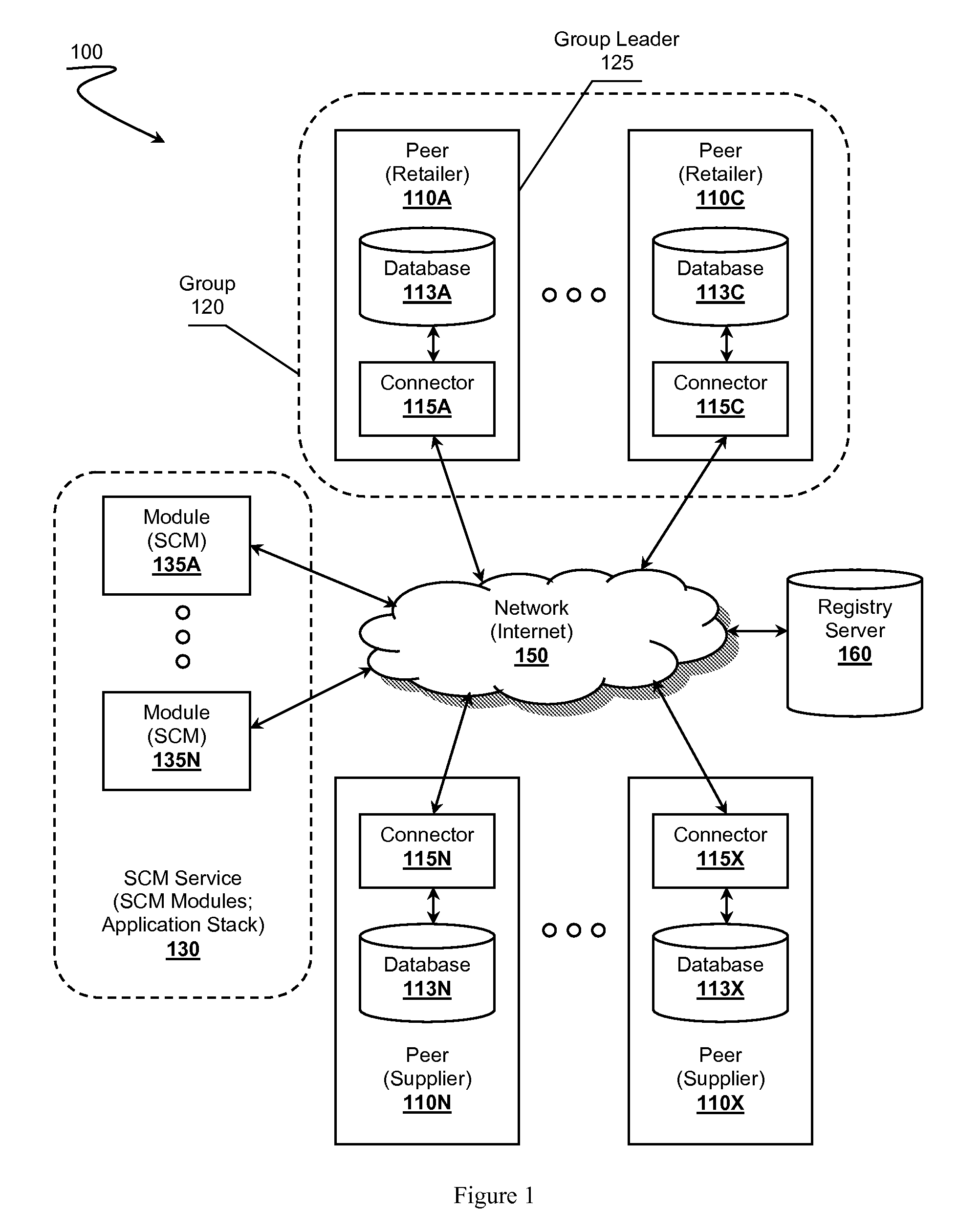Supply Chain Management Systems and Methods
a supply chain management and supply chain technology, applied in the field of distributed application technologies, can solve the problems of inability to compete with larger chain stores, inability to meet the needs of independent retailers, and inability to meet the needs of large-scale retailers, etc., and achieve the effect of reducing latency tim
- Summary
- Abstract
- Description
- Claims
- Application Information
AI Technical Summary
Benefits of technology
Problems solved by technology
Method used
Image
Examples
Embodiment Construction
[0033]Throughout the following discussion, numerous references will be made regarding servers, services, interfaces, modules, platforms, or other systems formed from computing devices. It should be appreciated that the use of such terms is deemed to represent one or more computing devices having at least one processor configured to execute software instructions stored on a computer readable media. For example, a server can include one or more computer operating as a web server, database server, a server farm, or other type of computer server in a manner to fulfill described roles, responsibilities, or functions. One should appreciate that the deployment of the disclosed subject matter provides a platform that reduces an amount of processing time for managing a value chain among peer members of the chain, or can increase computing capabilities to address SCM applications.
[0034]One should appreciate that although aspects of the inventive subject matter are presented within the context...
PUM
 Login to View More
Login to View More Abstract
Description
Claims
Application Information
 Login to View More
Login to View More - R&D
- Intellectual Property
- Life Sciences
- Materials
- Tech Scout
- Unparalleled Data Quality
- Higher Quality Content
- 60% Fewer Hallucinations
Browse by: Latest US Patents, China's latest patents, Technical Efficacy Thesaurus, Application Domain, Technology Topic, Popular Technical Reports.
© 2025 PatSnap. All rights reserved.Legal|Privacy policy|Modern Slavery Act Transparency Statement|Sitemap|About US| Contact US: help@patsnap.com



